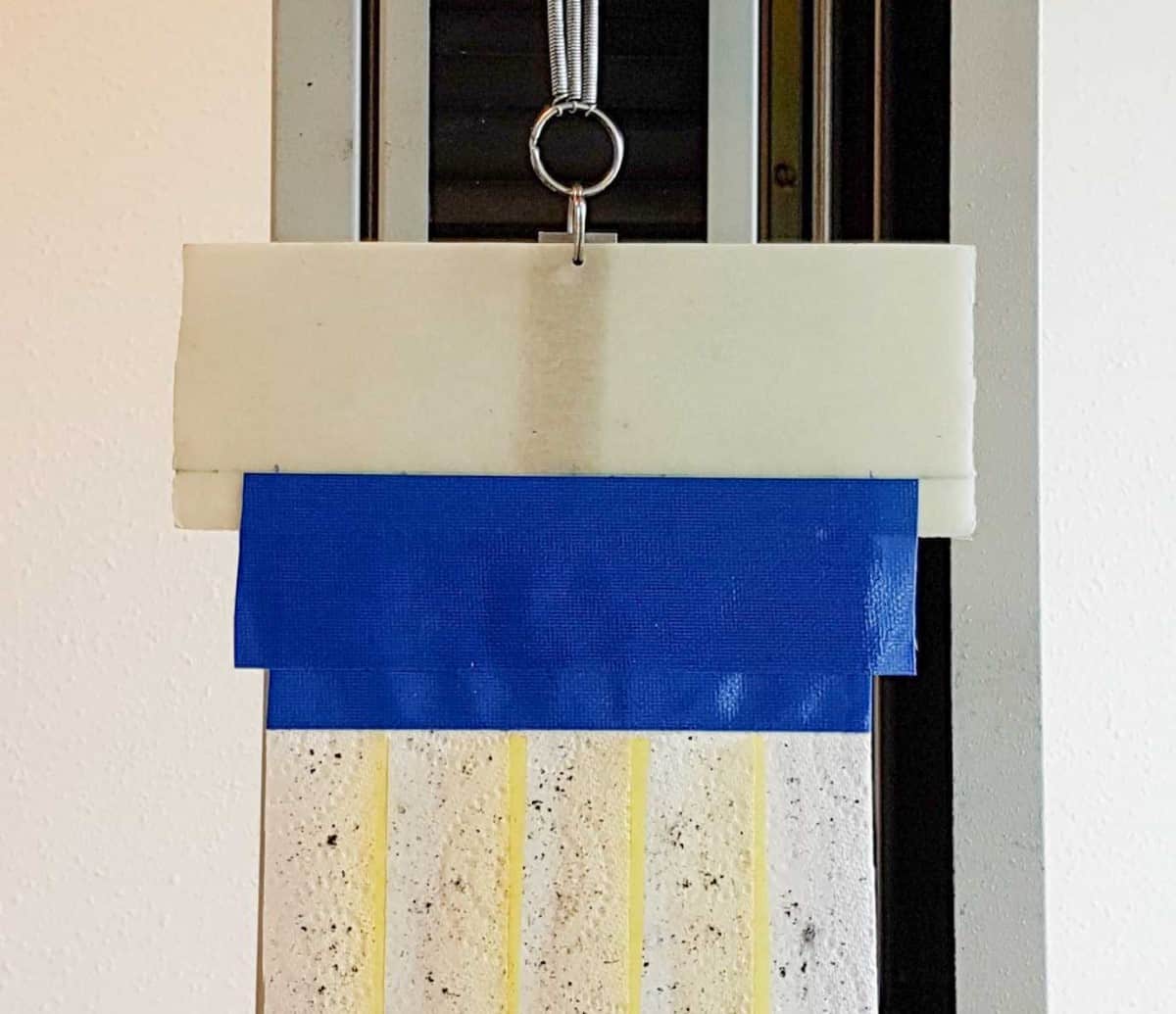A seismic model based on kitchen roll (paper towels) has been used to show that the intensity of earthquakes can be reduced by at least a factor of ten by injecting fluid into the ground. Designed by researchers in France, the model could lead to proactive seismic interventions to reduce the risk of disasters and also help to guide the industrial projects involving underground fluid injection.
Earthquakes occur when elastic energy stored in the Earth’s crust is suddenly released by movement along a fault line. This motion can result naturally from a critical built up of tension or it can be triggered accidentally by the injection of fluids in the ground near a fault. The latter can occur during oil extraction, wastewater disposal or deep geothermal projects. Understanding the nature of such induced seismicity is key to mitigating risk.
In their study, geophysicist Ioannis Stefanou and colleagues at the Ecole Centrale de Nantes modelled a simple dip–slip fault by clamping kitchen roll – or, as the team calls it, “absorbent porous paper” – between an anchor and a spring. The spring is slowly stretched to increasing tension to the model system in a manner analogous to how the tension increases in a seismic system. When the tension is sufficient, the paper tears and the spring releases the equivalent amount of energy as a magnitude 5.9 earthquake, were the model scaled up represent a real, 6.5 km long fault.
Reduced friction
The paper is divided into strips, which the researchers used to represent segments of the fault each under the influence of a different injection well. On a real fault, the injection of pressurized fluids causes the apparent friction of the system to drop, with the potential to reactivate the fault and initiate slip. In the model, a comparable stress drop can be brought about by wetting the kitchen roll which causes the strength of the paper to reduce prior to failure.
“By progressively wetting the porous paper, we simulated fluid injections in the Earth’s crust. Each injection was accompanied by tremors, which progressively released energy and modified the energy budget of the system,” explains Stefanou. “Our experiments show that, without precise knowledge of the fault properties, we risk destabilizing the system and provoke a large seismic event,” he continued — noting the relevance to real-world fluid injection scenarios that could induce seismicity.
“However, he adds, “provided that the model’s key parameters – fault segmentation, segment-activation rate, and stress state – are well known or controlled, the natural rupture can be mitigated by at least one unit.” Mitigation of the fault’s stored energy via provoking small quakes was only possible, the team found, only when the stress state of the system was low enough at the start that the whole fault region was not reactivated.
Introducing heterogeneities
The concept could be adapted to mirror different types of fault configuration by changing the geometry of the paper samples, Stefanou said, as long as the scaling law connecting the physical model with the real-world system was updated as well. “Using, let’s say, tape or glue, one could introduce heterogeneities or reinforce and waterproof some parts of the samples,’ he explained. “This would change the local stress state, create permeability paths and give more options for new experiments.”

How to forecast an earthquake
Stefan Nielsen, a seismologist at the University of Durham comments “One attractive feature of this model is that it allows to explain the physics of the process in an intuitive way, showing that the mathematics describing the reality and the laboratory are similar”. However, he cautions, there can be problems in translating laboratory observations to the real Earth.
“In this example, the tectonic loading increases until failure is reached, a process which takes hundreds of years in the real Earth. Fluid injection, on the other hand, would be almost instantaneous with respect to the tectonic loading time. In nature, a fluid injection would suddenly permeate a fault which is under a virtually constant state of load, instead of a gradually increasing load as in this model,” Nielsen explains.
Dramatic failure
“Therefore, on natural faults fluid injection may result in a much-increased risk of dramatic failure, unless the fault is caught in the early stages of the seismic loading cycle,’ he concludes.
The paper fault model is part of a larger project, funded by the European Research Council, to determine if it is possible to reliably control earthquake instability to minimize loss of life and economic disruption. “In my group we focus on proving (or disproving) mathematically the possibility of controlling the seismic slip,” Stefanou explained. “This is like designing a cruise control system for faults, but it is much more difficult than cars!”
Alongside laboratory-based tests with surrogate models, the team also work with computer simulations. Stefanou concluded: “Our results up to now are very promising and show us how fluids have to be injected in order to prevent earthquakes, even in the case of high stress level ratios.”
The study is described in Geophysical Research Letters.
